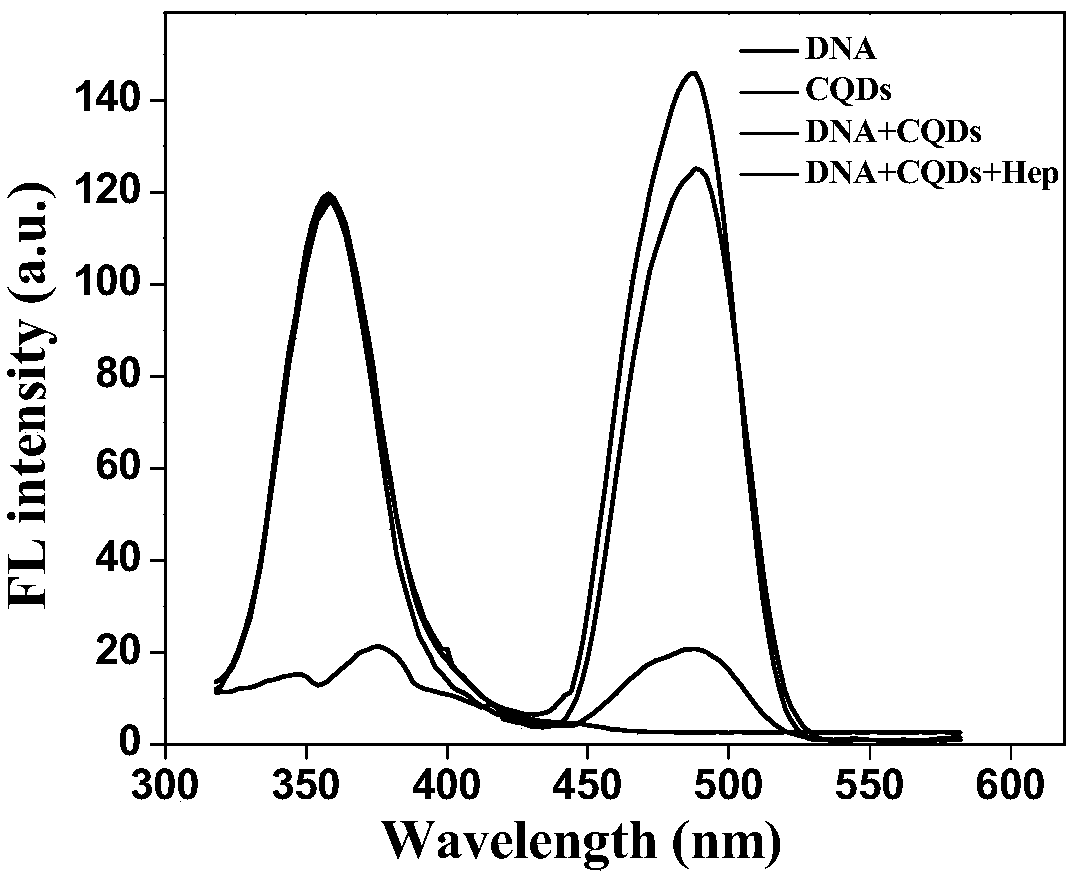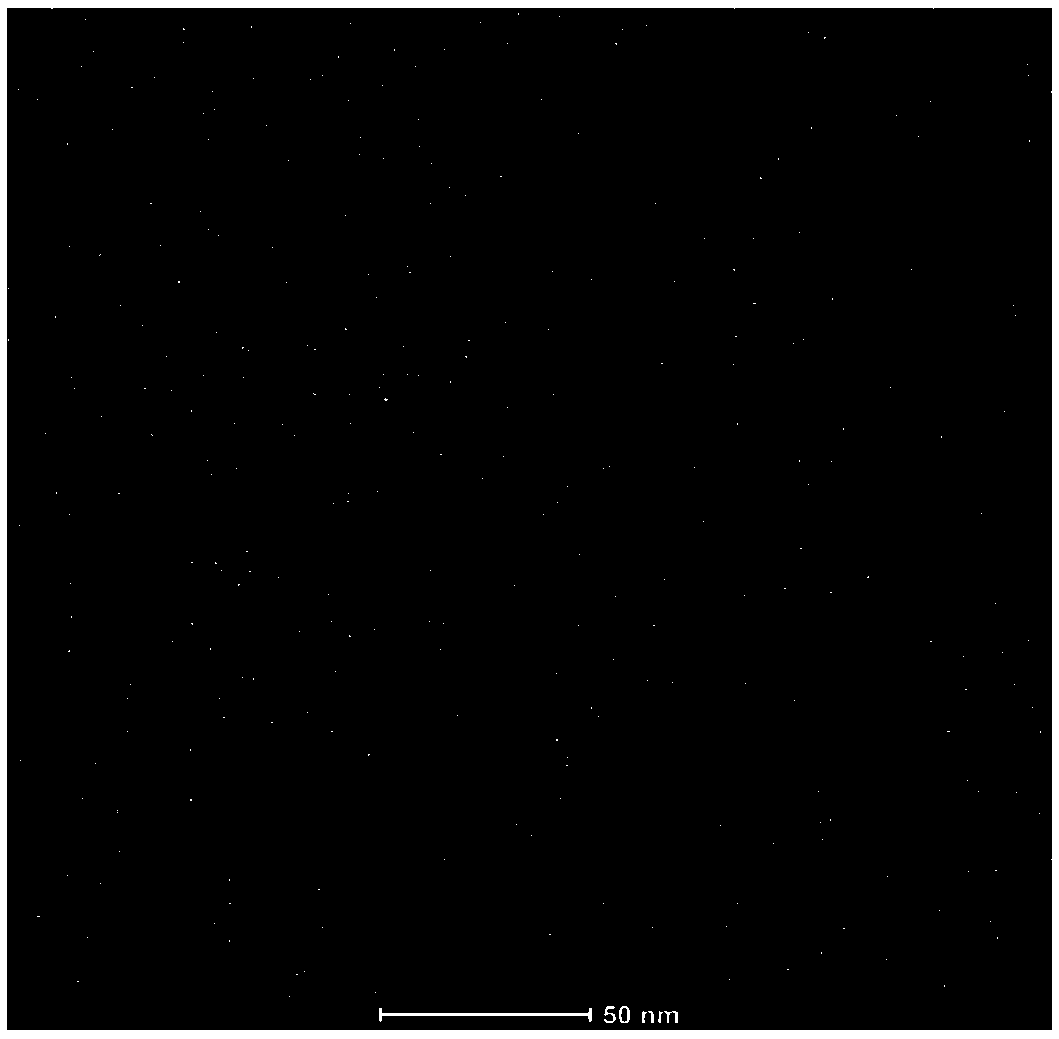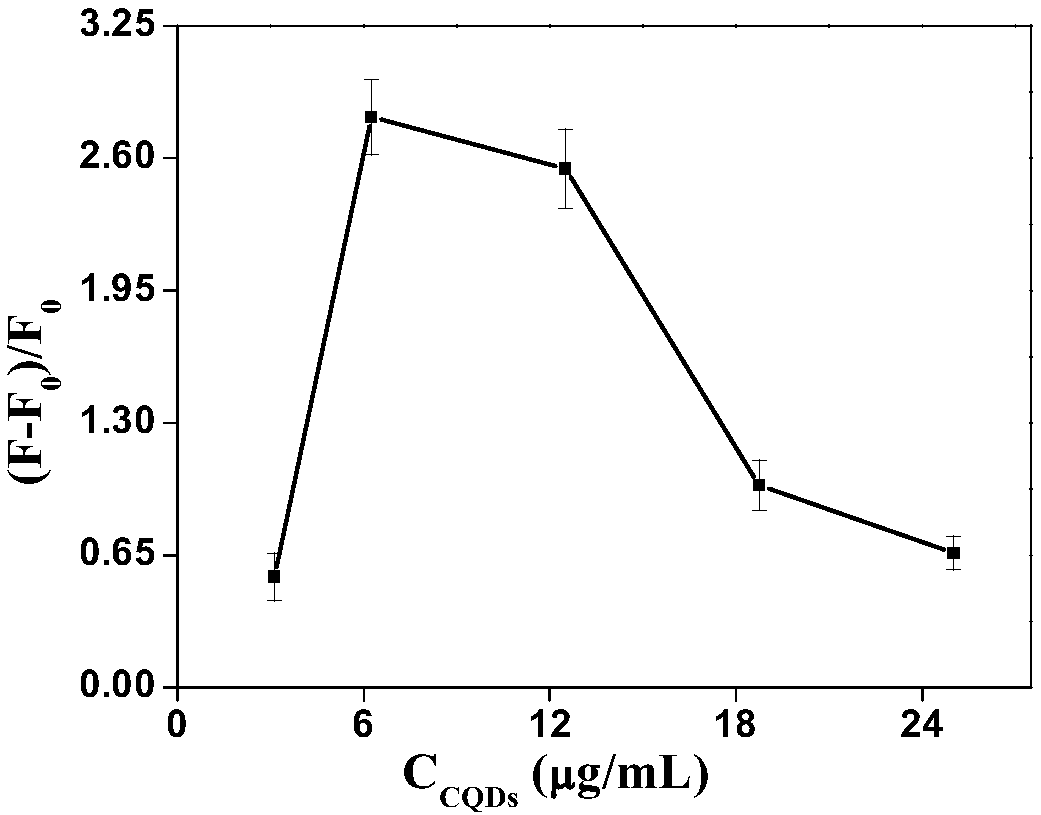Heparin sodium detection through proportional fluorescence method based on carbon-quantum-dot-quenched fluorescence-labeled DNA
A technology of carbon quantum dots and fluorescent labeling, which is applied in the field of detection of heparin sodium, can solve problems such as ratiometric fluorescence analysis methods for the determination of heparin, and achieve the effects of high sensitivity, convenient operation, and simple measurement conditions
- Summary
- Abstract
- Description
- Claims
- Application Information
AI Technical Summary
Problems solved by technology
Method used
Image
Examples
Embodiment Construction
[0026] (1) The present invention will be described in detail below in conjunction with specific embodiments and accompanying drawings. It should be understood that the specific embodiments described here are only used to illustrate and explain the present invention, and are not intended to limit the present invention.
[0027] (2) Example (feasibility analysis)
[0028] The sample of the feasibility experiment of this embodiment is made through the following steps:
[0029] Prepare the following solutions: solution 1 is CQDs; solution 2 is FAM-ssDNA; solution 3 is CQDs+FAM-ssDNA; solution 4 is CQDs, FAM-ssDNA and sodium heparin. Among them, the concentration of CQDs is 6.25 μg / mL, the concentration of FAM-ssDNA is 50 nM, and the concentration of sodium heparin is 2.0 μg / mL. The three component solutions are all prepared with phosphate buffer solution. The buffer solution used in the embodiment of the present invention (buffer solution is composed of Na 2 HPO 4 ﹒ 12H 2 O,...
PUM
 Login to View More
Login to View More Abstract
Description
Claims
Application Information
 Login to View More
Login to View More - R&D
- Intellectual Property
- Life Sciences
- Materials
- Tech Scout
- Unparalleled Data Quality
- Higher Quality Content
- 60% Fewer Hallucinations
Browse by: Latest US Patents, China's latest patents, Technical Efficacy Thesaurus, Application Domain, Technology Topic, Popular Technical Reports.
© 2025 PatSnap. All rights reserved.Legal|Privacy policy|Modern Slavery Act Transparency Statement|Sitemap|About US| Contact US: help@patsnap.com



